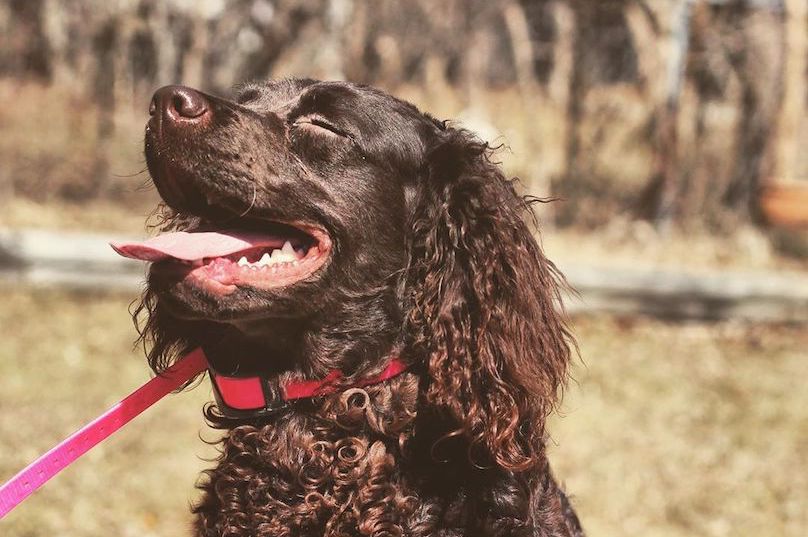Other names: American Brown Spaniel, American Brown Water Spaniel, AWS.
The American Water Spaniel is a breed of spaniel which originated in the United States. It was developed in the state of Wisconsin during the 19th century from many other breeds, including the Irish and English Water Spaniels. The breed was saved by Dr. Fred J. Pfeifer, who set up the breed club and standard, and whose work led to recognition for the breed by the United Kennel Club, and later, the American Kennel Club. While they are the state dog of Wisconsin, they remain a rare breed.
They are medium-sized dogs and have a double-layered coat, which comes in a variety of brown related shades. A versatile hunting dog, they are also suitable for apartment life due to work by breeders to develop a breed with an even temperament. The American Water Spaniel (AWS) may have been involved in the development of the Boykin Spaniel.
History
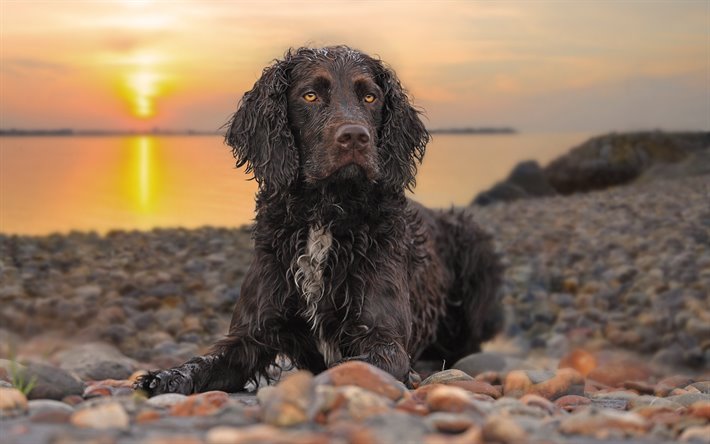
The American Water Spaniel is the Wisconsin state dog The breed originated in the areas along the Fox River and its tributary the Wolf River during the early 19th century. Hunters needed a dog that could work on both land and water, a versatile hunter skilled at bringing in a variety of game. Hunters also wanted a hunting dog compact enough to be transported in a small skiff, one that was able to withstand Wisconsin’s cold water temperatures. Breeds involved in the creation of the American Water Spaniel are thought to have included the English Water Spaniel, Irish Water Spaniel, Curly Coated Retriever, native Indian Dogs, the Poodle, and either the Sussex Spaniel or another type of field spaniel.
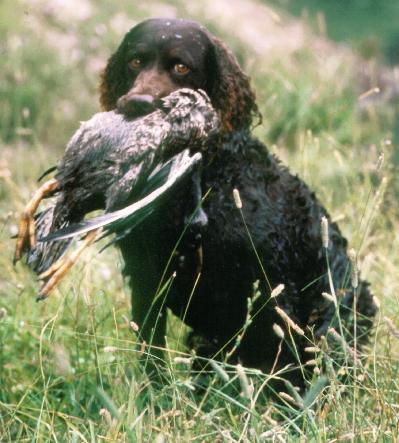
This little brown dog created was known at the time as the American Brown Spaniel, and weighed around 40 pounds (18 kg). It had a thick curly coat that protected it from the cold temperatures of the water and winter. It was used to hunt waterfowl, ruffed grouse, greater prairie chicken and a variety of fur-bearing animals.
An American Water Spaniel’s coat is water-resistant
Over the years the numbers of the breed began to dwindle due both to a reduction in the duck population through those valley areas and because of a switch in hunting – from a means to gather food for survival to that of recreation. Additionally, following World War II, new types of dogs became available in Wisconsin such as setters, pointers and other spaniels, allowing additional specialization in hunting.
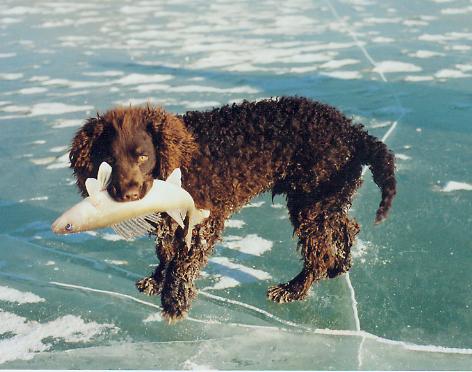
The breed has links to the Boykin Spaniel and is thought to have been the main breed used to develop the Boykin. The differences between the Boykin and the American Water Spaniel (AWS) are negligible with some dog historians suggesting that the original Boykin, called “Dumpy”, who was found on the streets of Spartanburg, South Carolina, was an American Water Spaniel who had been misplaced in transit. However, the breed clubs for the Boykin do not agree with this account.
The breed was made the state dog of Wisconsin in 1985. The American Water Spaniel remains a rare breed. During 1998 only 233 puppies were registered with the AKC, with an estimated 3,000 dogs in existence mostly around the Midwestern United States, in particular in Wisconsin, Minnesota and Michigan. In 2010, the breed was ranked 143rd most popular breed in the United States, out of 167 breeds. This is a decrease since 2000 when the breed was ranked 125th.
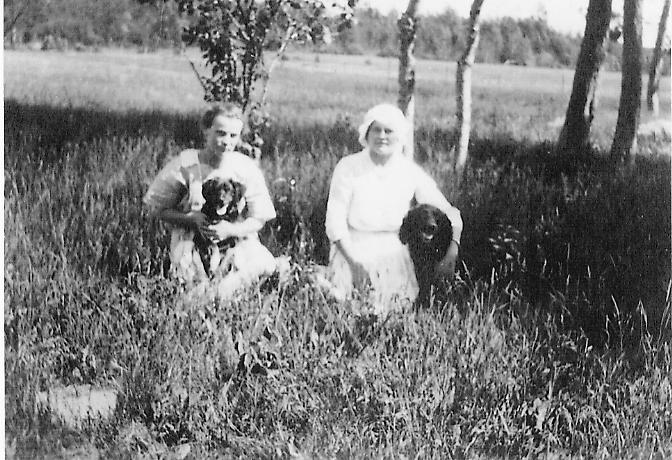
Appearance
The limited popularity of the American Water Spaniel restricted development, resulting in the breed being relatively unchanged since its origins in the 19th century. They are a medium-sized dog, with a curly liver, brown, or chocolate-coloured coat. The average height at the withers for the breed is 15–18 inches, and their weight around 25–45 pounds. They have similar features to the Irish Water Spaniel, but the Irish breed is larger at between 21–24 inches (53–61 cm) and weighing 55–65 pounds (25–29 kg). The coat of the American Water Spaniel can fall in two different patterns, either tightly curled or in the “marcel pattern” where the fur falls in waves. Working and show lines have not diverged as with some other breeds of spaniel, and both appear the same, with show dogs of this breed being rare.
The coat has a coarse outside layer which keeps water away and protects the dog from foliage such as briers. The inside layer provides insulation to keep the dog warm. The coat has an oily feel to it, which gives off a “doggy smell”. The breed standard specifies the colour of the eyes should harmonize with the colour of the coat, and should never be yellow. The skull is broad and carries long, wide ears. The tail is not typically docked.
Health
Pack breeding early in its development led to a level of genetic variation, so the hereditary conditions of more popular breeds are not common in the AWS. The breed, however, The breed has an average life span of 10–13 years.
